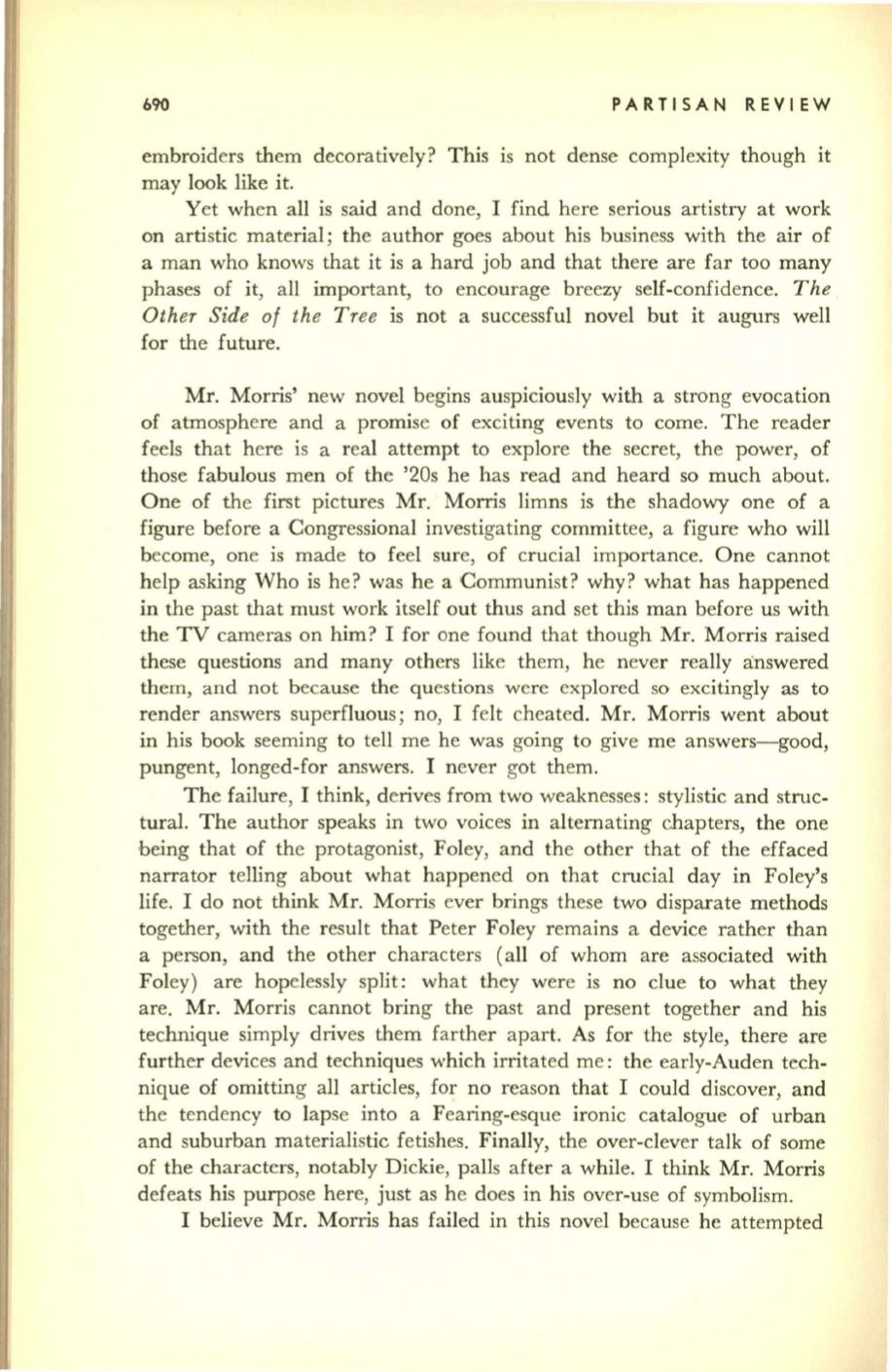
690
PARTISAN REVIEW
embroiders them decoratively? This is not dense complexity though it
may look like it.
Yet when all is said and done, I find here serious artistry at work
on artistic material; the author goes about his business with the air of
a man who knows that it is a hard job and that there are far too many
phases of it, all important, to encourage breezy self-confidence.
The
Other Side of the Tr.ee
is not a successful novel but it augurs well
for the future.
Mr. Morris' new novel begins auspiciously with a strong evocation
of atmosphere and a promise of exciting events to come. The reader
feels that here is a real attempt to explore the secret, the power, of
those fabulous men of the '20s he has read and heard so much about.
One of the first pictures Mr. Morris limns is the shadowy one of a
figure before a Congressional investigating committee, a figure who will
become, one is made to feel sure, of crucial importance. One cannot
help asking Who is he? was he a Communist? why? what has happened
in the past that must work itself out thus and set this man before us with
the TV cameras on him? I for one found that though Mr. Morris raised
these questions and many others like them, he never really answered
them, and not because the questions were explored so excitingly as to
render answers superfluous; no, I felt cheated. Mr. Morris went about
in his book seeming to tell me he was going to give me answers-good,
pungent, longed-for answers. I never got them.
The failure, I think, derives from two weaknesses: stylistic and struc–
tural. The author speaks in two voices in alternating chapters, the one
being that of the protagonist, Foley, and the other that of the effaced
narrator telling about what happened on that crucial day in Foley's
life. I do not think Mr. Morris ever brings these two disparate methods
together, with the result that Peter Foley remains a device rather than
a person, and the other characters (all of whom are associated with
Foley) are hopelessly split : what they were is no clue to what they
are. Mr. Morris cannot bring the past and present together and his
technique simply drives them farther apart. As for the style, there are
further devices and techniques which irritated me: the earIy-Auden tech–
nique of omitting all articles, for no reason that I could discover, and
the tendency to lapse into a Fearing-esque ironic catalogue of urban
and suburban materialistic fetishes. Finally, the over-clever talk of some
of the characters, notably Dickie, palls after a while. I think Mr. Morris
defeats his purpose here, just as he does in his over-use of symbolism.
I believe Mr. Morris has failed in this novel because he attempted


